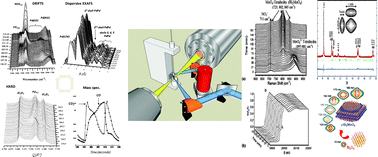Combining synchrotron-based X-ray techniques with vibrational spectroscopies for the in situ study of heterogeneous catalysts: a view from a bridge†
Abstract
The advantages, challenges, and future possibilities for combining

- This article is part of the themed collection: In-situ characterisation of heterogeneous catalysts

 Please wait while we load your content...
Please wait while we load your content...